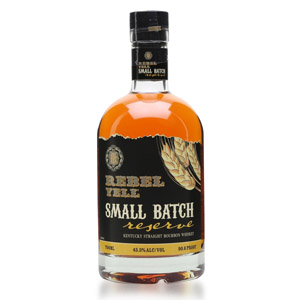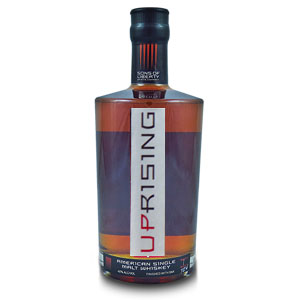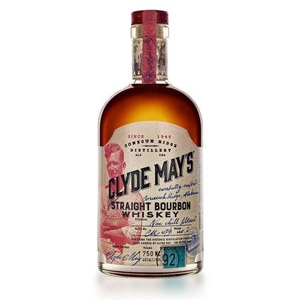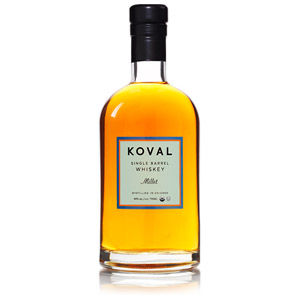Bourbon, although on the face of it a simple drink made only of corn, grains, water, yeast, oak, and time, and created only in the United States of America, it still has more capacity to confuse than the ancient and (to some) arcane system of nomenclature used in Scotch distribution. Of course the complexity is mainly due to multiple brands being owned by the same companies, and distilleries making whiskey by contract for other brands… and rye, despite the name, containing as much as 49% bourbon. Bourbon is made only in a small handful of distilleries, and yet is sold by a dizzying array of brands, holding companies, independent bottlers, and blenders. Despite having sampled a lot of bourbon now, and being reasonably firm in my grasp of rye-flavored vs. wheat-flavored bourbon, the difference between Tennessee Whisky and Bourbon (hint: the first is made in Tennessee!), and a reasonable expectation of flavor profiles… I still couldn’t tell you what is made where or by whom. Luckily, David at K&L recently (ok, not so recently – so sue me, I’m behind in my posting) cleared up a lot of my confusion by posting this indispensable guide to bourbon brands. While not an exhaustive list, it taught me the following:
Four Roses Distillery makes Four Roses and also distills Bulleit bourbon for Diageo. Buffalo Trace makes Buffalo Trace, Elmer T Lee, Eagle Rare, Weller, Rock Hill Farms, Blanton’s, George T. Stagg, Tom Handy Rye, Pappy Van Winkle bourbon, and Sazerac Rye. Heaven Hill makes Elijah Craig, Evan Williams, and Parker’s Heritage, and Rittenhouse Rye (which has also been made elsewhere in the past). Wild Turkey Distillery makes Wild Turkey and Russell’s Reserve. Maker’s Mark Distillery makes Maker’s Mark. (Say that three times fast). Brown-Forman makes Old Forester and a proportion of Woodford Reserve, the rest of which is made at… Woodford Reserve Distillery. Jim Beam Distilleries (there are two) make Jim Beam, Knob Creek, Booker’s, Baker’s, Old Overholt Rye and Old Grand Dad. LDI (Lawrenceburg Distillers Indiana) which is now known as MGP of Indiana (Midwest Grain Products) makes High West Rye, Redemption Rye, Willett Rye, Templeton Rye, and Bulleit Rye, and a number of bourbons such as James E. Pepper, Hirsch, Smooth Ambler Old Scout, and probably a dozen others that nobody has identified.
Noah’s Mill, Rowan’s Creek, Pure Kentucky, Willett bourbon, Johnny Drum, Black Maple Hill, and Michter’s (all products of the Willet Family’s Kentucky Bourbon Distillers – KBD) were all sourced from various distilleries, and it’s anybody’s guess which brand comes from which distillery (or distilleries, some are definitely blends). This is of course also true of the other independent bottlers on the market, who (like Scotch independent bottlers) buy barrels from producers and market their own blends without disclosing their sources. Update: Willett now has its own distillery and is finally producing its own whiskey!
It’s worth remembering that although many different brands of whiskies are made on the same exact stills, the recipes (which include the mashbills, source of water, yeasts, fermentation procedures, distillation variants, cooling and cutting variants, aging and bottling strength, and more) are very different. The most illustrative example of this (for me), is the Pappy Van Winkle thing – made for many years at the old Stitzel-Weller Distillery until it was dismantled, Pappy bourbon was one-of-a-kind… until Buffalo Trace began distilling it on behalf of the Van Winkle family, using the same wheated recipe used at SW. Now, only your most jaded bourbon drinker would be able to detect the difference. Sure, there was some “secret sauce” going on at SW, but BT managed to replicate it pretty successfully, even with different stills and stillmen. Perhaps that says something about “terrior” in whiskey!






Just as an FYi – the “must be produced in Kentucky” thing is a misconception. Bourbon can be produced anywhere in the US and called bourbon. There is no “must be made in Kentucky” rule. LDI whiskies are made in Indiana and are bourbon; Tuthilltown has a bourbon made in New York, etc.
Oops! Goes to show I shouldn’t be writing about bourbon at all – thanks for the correction, Tim. I’ll correct my post.
Absolutely true that bourbon can be produced anywhere in the U.S. and still be called bourbon. But a producer can’t call the stuff “Kentucky straight bourbon” unless it comes from Kentucky.
What Ben says… +1.
Absolutely, it is confusing, but so to is Canadian whisky, and in some cases so is Scotch (as you’ve rightly pointed out), with different distilleries producing different brands, and in some cases one corporation owning the rights to distribute a whisky that is actually distilled and bottled by a different company.
Just started scotch and reading your blog. Love it so far. I’m a Kentucky native and long time bourbon lover. Just FYI- Federal law dictates that in order to be called Bourbon a whisky must be made from at least 51% corn mash, be aged at least two years in New Charred Oak barrels, and be made with Limestone filtered water. The only reason the vast majority of Bourbon comes from Kentucky is that we have the largest limestone deposits in the world.
Keep up the good work!
Love this site.